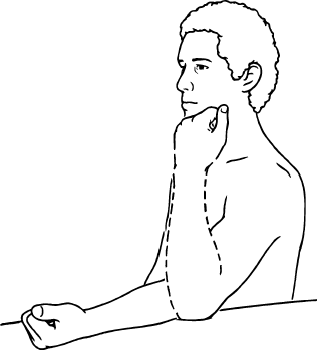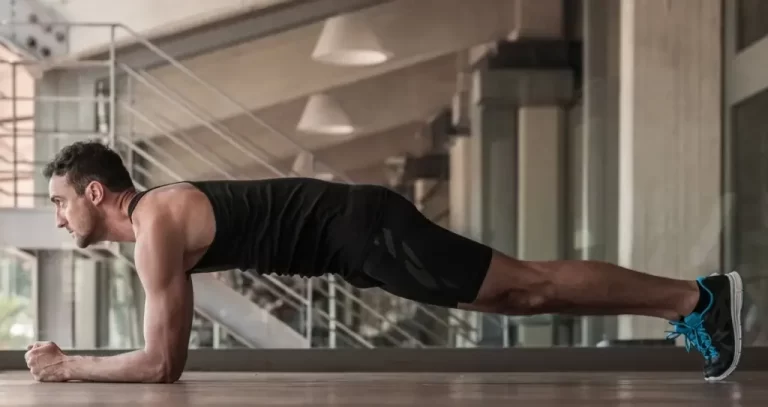Elbow Joint Range of Motion Exercise
What is the Elbow Range of Motion Exercise?
All three types of elbow joint range of motion movements are included in exercises that concentrate on passive, active, and active-assisted range of motion.
Types of elbow joint range-of-motion exercises
- Passive range of motion exercise: The first type of exercise involves passive range-of-motion, wherein the elbow joint can only be manipulated by the user, by other people, or by a passive motion machine.
- Active-assisted range of motion exercise
- Active range of motion exercise
Movements of the elbow joint
Because it enables the hand to be moved into nearly any position, the elbow is crucial for performing a variety of tasks.
- Flexion
- Extension
- Supination: Turning one’s hand and forearm such that the palm faces upward or forward
- Pronation
Placement for the goniometer
- Axis location: The lateral epicondyle
- Stationary arm: positioned parallel to the humerus
- Movement arm: in line with the radius
First, the patient should be instructed to straighten their elbow from its maximum flexion position. After that, the patient should be given a little pressure to check the elbow extension’s passive range of motion.
Exercise your elbow’s passive range of motion.
This is helpful for the elbow joint that has become immobile due to damage or even a paralysis attack of any kind. gently stretching the muscles and retraining the patient on how to move correctly. Here, a therapist stretches the elbow’s soft tissue to release tension and relax the nearby muscles. Exercises including passive range of motion for the elbow also help to reduce stiffness and rigidity in the immobilized elbow joint.
Elbow stretches that involve a passive range of motion are more effective when performed with a therapist nearby to help with the stretch. In order to increase muscle flexibility, the skilled practitioner does this kind of exercise by both moving and holding the upper arm in a stretched position.
This is better in a few ways.
First of all, the therapist is aware of appropriate boundaries and knows when to stop.
Finally, in order to maximize benefits, a physical therapist is trained to determine whether they are targeting the right location. Keep it in consideration.
When a patient is unconscious, has a mending fracture, experiences an attack of paralysis, or experiences pain during an active muscular contraction, passive range of motion (PROM) exercises are usually employed for the elbow joint. However, it’s crucial to keep in mind that PROM exercises are unable to stop muscle atrophy.
Benefits the passive range of motion Exercises
Exercises that promote the passive range of motion not only help the patient maintain healthy joint functionality but also reduce pain, speed up healing, restore and maintain range of motion in injured joints, increase muscle mass, improve blood flow, and raise oxygen levels.
A few suggestions for an elbow passive range of motion exercise
- Maintain constant support for an arm’s weight.
- Continue moving smoothly and slowly.
- The physical therapist ought to limit their movements to what the elbow joint or muscle will allow.
Passive range of motion exercise
- Passive elbow flexion in full supination
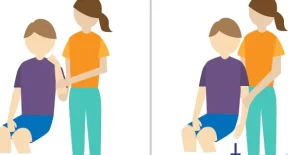
Subsequently, the therapist must gently slant their elbow and, if feasible, place their hand on the elbow. Ten times during a session, do it. Work out three times a day.
- Passive elbow flexion in mid-pronation position
Next, if it is feasible, the physical therapist should gently bend from the elbow and make contact with the elbow with their hand. Repeat ten times in a single session. Work out three times a day.
- Passive elbow flexion in full pronation position
A patient should be instructed to begin by a therapist once they have assumed a comfortable position, such as supine with their hands fully pronated. The next step for a physician is to gently bend from the elbow and, if at all feasible, have the hand touch the elbow. Ten times during a session, do it. Work out three times a day.
- Passive elbow extension
Next, if it is feasible, a therapist should have the hand touch the elbow while gradually straightening the elbow.
- Passive elbow supination
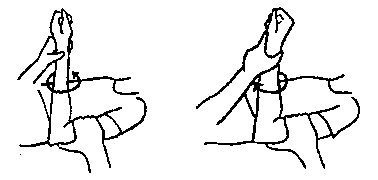
The therapist should next take hold of the hand and shake it. Then, perform this drill ten times in a session. Work out three times a day.
- Passive elbow pronation
The hand is then moved by the therapist into pronation, which is a supination position with the palm toward the floor.
- The patient flexes their elbow passively
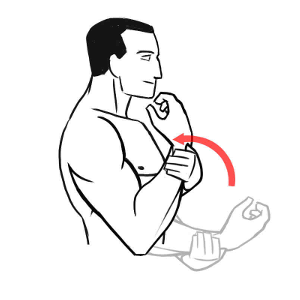
The patient should be instructed to lie down in a comfortable position, such as supine, before beginning. Next, the patient should slowly bend from the elbow, if at all possible, letting the hand touch the elbow. Make an effort to flex your elbow to its maximum range of motion.
- passive elbow extension on the other hand.
Subsequently, the patient has to gradually extend their elbow and, if feasible, make contact with it with their hand. Make an effort to extend your elbow to its maximum range of motion. Ten times during a session, do it. Work out three times a day.
- Passive supination by the patient’s other hand
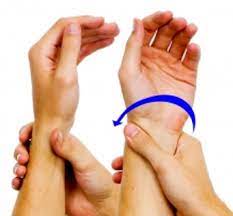
Subsequently, the patient is instructed to gradually rotate their forearm outward or upward, ensuring that their hand is fully pronated from their elbow and touching it if feasible. Ten times during a session, do it. Work out three times a day.
- Passive pronation by the patient’s other hand
The patient should next gradually rotate their forearm inward or downward so that their hand is facing the floor, fully supinated from the elbow, and, if at all feasible, touching the elbow.
Active-assisted range of motion exercise
As the name implies, the patient or the therapist may provide some assistance throughout these exercises. While the patient undertakes most of the work, little assistance is provided to ensure that the elbow motion is performed appropriately.
Most often, weakness or pain from falls, bruises, accidents, or even more serious injuries is the reason for this restricted elbow movement. When first practicing these exercises, a patient may experience severe pain and weakness, but with time, there is a good chance that their range of motion around the elbow joint will gradually and permanently improve.
Exercises for elbow active-assisted range of motion have several advantages.
- improves the elbow joint’s range of motion.
- Improve the effectiveness of motion.
- Improve self-reliance.
- lessen suffering.
Active-assisted range of motion exercise
- Active-assisted elbow flexion
The patient should then be instructed to move their forearm to the face side, or behind their elbow, but once they stop, the therapist should aid them in completing the full range of elbow flexion. In one session, perform ten repetitions.
- Active-assisted elbow flexion in mid pronation
The patient’s elbow or upper arm should then be supported by a therapist using one hand, while the other strong hand should be used to grasp the patient’s wrist or forearm. Once the patient has stopped doing this, the physician should assist the patient in completing the full range of elbow flexion. Ten reps should be done each session. Perform three sessions per day.
- Active-assisted elbow flexion in the pronation position
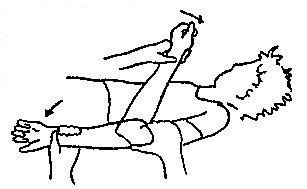
A patient should first be instructed by a physical therapist to assume a comfortable position, like sitting on a chair with their back supported. The patient’s elbow or upper arm should then be supported by a therapist using one hand, while the other strong hand should be used to grasp the patient’s wrist or forearm.
Subsequently, a physical therapist should instruct a patient to bend their elbow by moving their forearm towards their face; however, once the patient ceases the movement. Perform ten rounds in a session. Work out three times a day.
- Active-assisted elbow extension
The patient should first be instructed by the physical therapist to settle into a comfortable chair with their elbows bent and their back supported. Next, a physical therapy professional should instruct a patient to straighten their elbow by moving their forearm from the face side to the floor side. Perform ten rounds in a session. Work out three times a day.
- Active-assisted forearm supination
Initially, a physical therapist should instruct a patient to assume a comfortable posture, such as sitting on a chair with their back supported and their elbow fully extended to 90 degrees. Next, the medical professional should use one strong hand to support the patient’s elbow or upper arm and another strong hand to grip the patient’s wrist or forearm.
The patient should next be instructed to rotate their forearm outward such that their palm faces the ceiling. However, once the patient ceases this motion, the physical therapist should assist them in completing the full range of forearm supination. Perform ten rounds in a session.
- Active-assisted forearm pronation
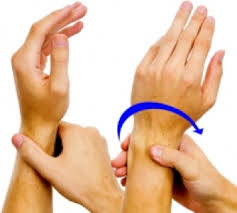
Before beginning, the therapist should instruct the patient to assume a comfortable position, such as sitting with their back supported and their elbow fully supinated at a 90-degree angle. However, once the patient ceases this action, the therapist should aid them in completing the full range of forearm pronation. In one session, perform ten repetitions.
- Actively assisting elbow flexion with the stick
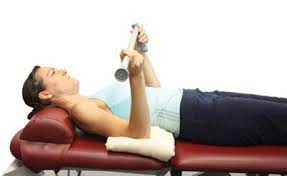
A patient should be instructed by a physical therapist to first assume a comfortable position, such as sitting with their back supported on a chair or table. The therapist should next instruct the patient to grip the stick’s end with both hands while supporting the patient’s elbow or upper arm with one hand and holding. Perform ten rounds in a session. Work out three times a day.
- Elbow extension helped actively with a stick
The patient should first be instructed by the therapist to assume a relaxed position, such as sitting on a chair or even a table with their backs supported and their elbows fully extended. Next, a physical therapist should instruct a patient to grip the stick’s end with both hands while supporting the patient’s elbow or upper arm with one hand and holding their wrist or forearm with the other. The patient is then instructed by the doctor to straighten their elbow in order to move their forearm away from their face, using both a hand and a healthy elbow. In one session, perform ten repetitions.
- Using one hand to actively help in forearm supination
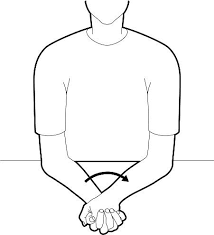
The patient should first be instructed by the therapist to get into a comfortable position, like sitting, with their elbow fully extended and 90 degrees flexed. They should then grab the affected hand with their healthy hand. Work out three times a day.
- using a different hand to actively assist forearm pronation
To begin, a physical therapist should instruct a patient to assume a comfortable position, such as sitting, with their elbow fully extended and supinated, and to hold their damaged hand with their uninjured hand. When the patient stops executing this action, the physical therapist assists in completing the full range of forearm pronation. Ten times during a session, do it. Work out three times a day.
Active range of motion exercises
Goals:
- Increase your strength
- Maintain or improve endurance
- Promote circulation
- Maintain or increase range of motion (ROM)
Active range of motion exercise
- Active elbow flexion
First, instruct the patient to get into a comfortable position, such as sitting or standing. Perform ten rounds in a session. Work out three times a day.
- Active elbow flexion in mid-supination position
First, instruct the patient to choose a comfortable position, preferably standing or sitting. Perform ten iterations in a single session.
- Active elbow flexion in pronation
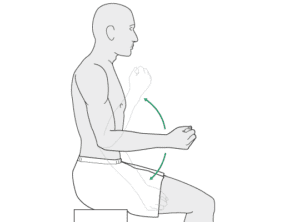
Tell the patient to settle into a comfortable position before starting, like sitting or standing. Next, instruct the patient to move their forearm toward their face by bending their elbow, but do not keep this posture until the desired outcome has been achieved. In one session, perform ten repetitions.
- Active elbow extension
First, instruct the patient to get into a comfortable position, such as sitting or standing. Subsequently, the therapist ought to instruct the patient to straighten their elbow, which entails moving their forearm away from their face, without holding them at the endpoint. In one session, perform ten repetitions. Work out three times a day.
- Active forearm supination
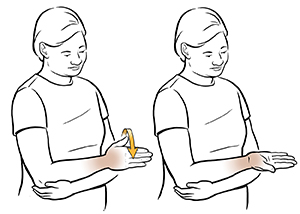
First, instruct the patient to assume a comfortable posture, such as sitting or standing with their elbow slightly bent at a 90-degree angle. Ten times a session, do it. Work out three times a day.
- Active forearm pronation
The therapist should first instruct the patient to settle into a comfortable position, such as sitting or standing with their elbows bent to a 90-degree angle. The patient should next be instructed by a therapist to turn their forearm inside so that their palm faces the floor.
FAQs
How can I extend the range of motion in my elbow?
Extension of the Elbow
Goal: straighten elbow completely. After five to ten seconds, relax your elbow and repeat this stretch.
What does elbow extension mean?
For any task that demands raising the arm above the horizontal, as well as to attain a stable hold, elbow extension is essential.
What is a limited elbow range of motion?
Loss of elasticity in muscles, ligaments, tendons, or skin results in a contracture. There will be less room for you to bend or extend your elbow.
What does elbow ROM function for?
More elbow flexion and pronation are needed for modern tasks like typing and using a cell phone than for the functional motion arc.
How can I rotate my elbow more effectively?
Exercises for Pronation and Supination
Active Supination and Pronation: Rotate your palm up and then slowly turn it down as far as it is comfortable to do so while keeping your elbow at your side and bent at a 90-degree angle.
How may elbow stiffness be decreased?
In certain cases, when conservative approaches prove ineffective or inappropriate, surgical relaxation of the stiff elbow may be the next step.
What is the elbow joint’s normal range of motion?
When it comes to elbow flexion-extension motion, healthy arms typically range from 6° to 11° for maximum extension and from 130° to 154° for maximum flexion.
Which four elbow motions are there?
We are able to do daily tasks because of the powerful muscles that span the elbow joint, which causes flexion, extension, supination, and pronation.
What is the elbow’s functional range of motion?
Elbow range of motion can be used for most daily activities, ranging from 75 to 120 flexion.
How can I get my elbow back to its full range of motion?
Here are a few elbow range-of-motion exercises that are frequently recommended: Elbow Extension and Flexion: To begin, take a seat or stand with your arm relaxed by your side. After a few seconds of holding this posture, progressively extend your arm.
References
- Prajapati, N. (2022b, May 13). Elbow range of motion exercise -Active, Passive & Active assisted exercise. Samarpan Physiotherapy Clinic. https://samarpanphysioclinic.com/elbow-range-of-motion-exercise/

